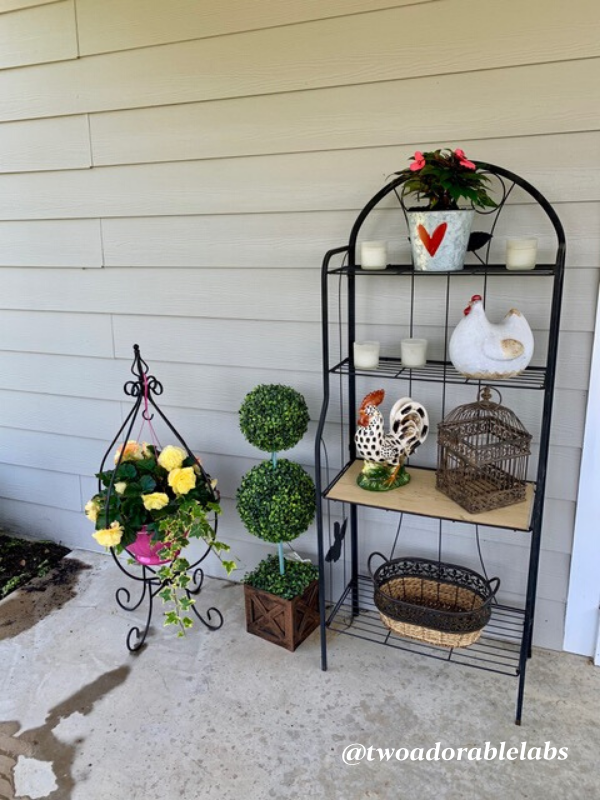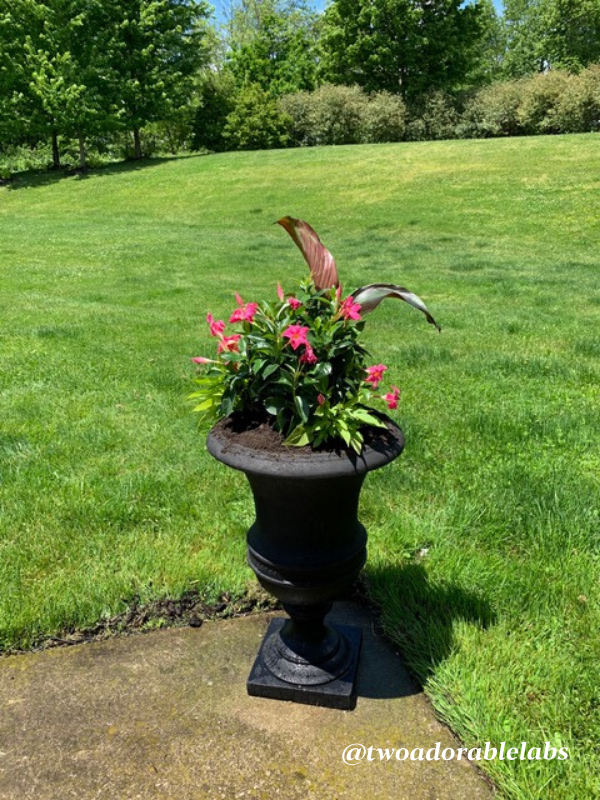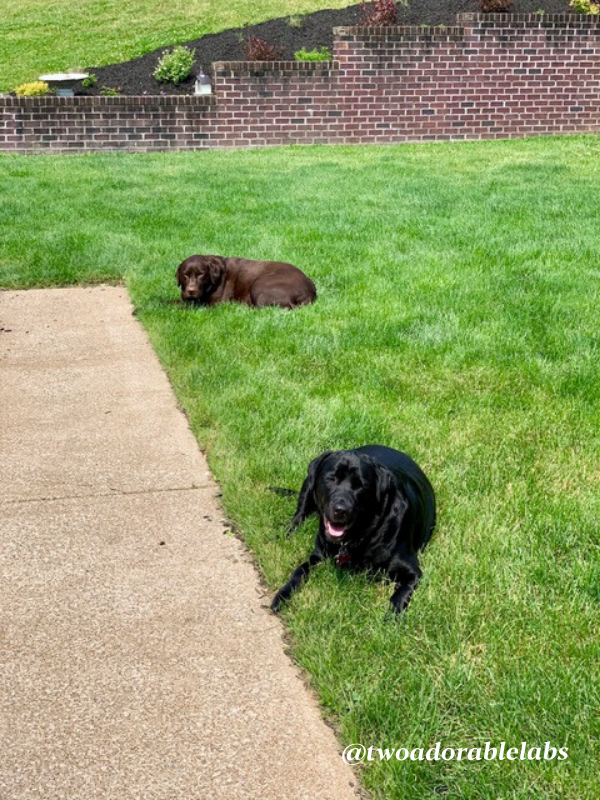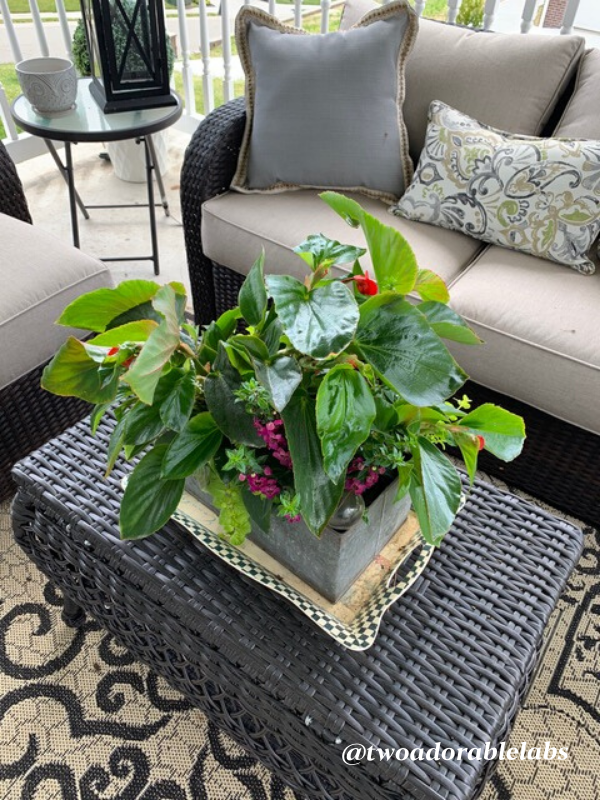Castor Bean Plant Toxic To Dogs
Happy Monday everyone! I hope everyone had a wonderful weekend. Thomas and I spent the last week and weekend checking off our to-do list. We weeded, planted, mulched, pressure washed, stained, cleaned, and played with the pups. Although I am talking about a poisonous plant that can kill your pet, I want to keep this blog post positive and will be sharing all of the pictures I took of our yard and our hard work. During this quarantine, I have acquired a love of planting and really enjoy all of the sweet birds that have made their homes in our hanging baskets and Japanese Maples. Next year we plan to buy hummingbird feeders and huts to add to the new Blue Marvel that I just recently planted. Blue Marvel is a Sage Salvia that brings the butterflies, hummingbirds, and is deer resistant. I started an herb garden (HERE) and starting designing the layout of what are yard is going to look like in the next two years. These pictures are the start of a flowery, colorful yard that will bloom from spring to fall. If you are new to the blog, I shared a post (HERE) last year of toxic plants as well as pictures of our house. I created this post because a friend of mine was given a Castor Bean plant not knowing anything about it. Her brand new puppy ate some of the beans and was rushed to the vet. Fortunately, sweet George made it through. I wanted to help educated not only myself but others on the this deadly plant.
If your dog has eaten any part of this plant, rush it to your vet immediately. The use of charcoal to induce vomiting and fluids will be administered upon finding out they can in contact with this plant. If the time since ingestion has only been a few hours your veterinarian will probably start with a gastric lavage which is usually done with the use of general anesthetic. Activated charcoal will most often be given to your pet at this point to soak up as much of the toxin as possible. The supportive treatment will include IV fluids for dehydration as well as electrolytes and sugars to adjust for any imbalances. Oxygen should also be given to the dog if breathing is becoming difficult, and pain management medications may also be administered. Ricin tends to be particularly injurious to the liver and kidneys and hepatoprotective medications are often warranted in addition to gastroprotective measures.
Calm before the storm!
Relaxing on the patio with the dogs, watching the storm come in, and planning out our week of mulch and landscape!

My love of color flows outside



What is a Castor Bean Plant?
Castor bean is an evergreen herbaceous or semi-woody large shrub or small tree with a star shaped leaf pattern. The alternate, star-shaped leaves on long petioles can grow over 2½ feet across. Each palmate leaf has 5 to11 deeply incised lobes, with serrated edges and prominent central veins. The species has glossy green leaves, but cultivated selections may have black-purplish, dark red-metallic, bronze-green, or maroon leaves, or bright green leaves with white veins. It also grows wild in Southern California and parts of Florida.
Flowers are produced in dense inflorescences 8-18″ tall at the tops of the stems. The monoecious plants produce male flowers below the terminal female flowers. The flowers do not have petals and are not particularly showy. The ½ inch male flowers each have a cluster of many cream or yellow stamens that shed large amounts of wind-borne pollen. They senesce soon after shedding their pollen. The three conspicuous, star-shaped stigma lobes of the female flowers are bright red with feathery branches.
The little spiny ovary of the female flower develops into a fruit or seed capsule about the size of a golf ball after pollination. The seed pods may be green, pink, or red (depending on the variety), but gradually age to brown. Each spherical, seed capsule is thickly covered with soft flexible spines and has three sections that separate when the seeds are mature. Each section contains one seed that is ejected, often with considerable force, when the carpel splits open.
The ½ inch long seeds, or “beans” (they are not true beans), are produced in large numbers where the growing season is long enough (140 to 180 days). The shiny, intricately mottled seeds are quite attractive, each with their own unique design in colors of black, gray, brown, yellow-brown, maroon and white.
Each seed has a small, spongy caruncle at one end which helps absorb water for germination when planted. Seeds remain viable for 2-3 years. About half the weight of the seed is a thick, yellowish or almost colorless oil that has been used in many industrial applications. The oil was used in ancient times as fuel for lamps, and is now used in paints and varnishes, for water-resistant coatings, in high-performance motor oils, soap, inks, and plastics. Other derivatives are used in polishes, as solid lubricants, in synthetic perfumes and other products. Plants are grown commercially for oil production primarily in India and Brazil, but also in some parts of the U.S. and other countries.




Are Castor Beans poisons to dogs?
The seeds are extremely poisonous, so keep plants out of reach of children and animals (or trim off flowering spike if this is a concern). The toxin in castor seeds is ricin (RYE-sin), one of the deadliest natural poisons, estimated as 6,000 times more poisonous than cyanide and 12,000 times more poisonous than rattlesnake venom. The cause of the toxicity in the castor bean plant is a protein called ricin. Ricin, only found in the castor bean plant, is one of the most poisonous substances to occur in nature. Although the ricin is present throughout the plant, it is most concentrated in the seeds of the plant, often referred to as castor beans. Castor beans are an attractive mottled brown and are used throughout the world to make jewelry and rosaries. It would take a great deal of plant material to be detrimentally toxic to your dog if no seeds were ingested. The concentration of ricin in the seed itself makes the seeds much more treacherous than the rest of the plant. Artisans creating jewelry have lost their lives due to accidental ingestion of the powder that escapes when holes are drilled into the seeds and due to pricking their fingers with the contaminated needles. If your dog ingests the seeds without chewing there is a chance that the seeds will pass through the system with no ill effects. If the beans are chewed or broken, or if they have drill holes from being made into jewelry, then the toxin is released from the shell.




What are the symptoms of Castor Bean Poisoning in dogs?
Symptoms of ricin poisoning from castor beans in dogs can occur anywhere from six hours to up to 42 hours after ingestion.
- Abdominal pain
- Abdominal straining
- Bloody diarrhea
- Death
- Dehydration
- Excessive drooling
- Hypotension (drop in blood pressure)
- Increase in body temperature
- Loss of appetite
- Pain in mouth
- Sudden collapse
- Trembling
- Vomiting
- Weakness




Types of Castor Bean Plants:
• Carmencita Bright Red’ – has red stems and bright red seed pods, along with dark purplish or bronzy-red leaves. This well-branched cultivar grows about 5-6 feet tall.
• Carmencita Pink – has pinkish-red stems and seed pods.
• Carmencita Rose – has blue-green foliage and peach-colored seed pods.
• Gibsonii – with dark red-tinged leaves and pinkish seed pods, it grows 4-5 feet tall.
• Impala – a more compact cultivar that grows to 4 feet tall with reddish-purple leaves and stems, with the brightest color on the new growth.
• New Zealand purple – has smaller, reddish purple leaves and branches less than other types.
• Red Spire – grows 7-10 feet tall, with red stems, bronze leaves, and red seed pods.
• Sanguineus – has blood-red stems and leaves.
• Zanzibarensis – another tall variety (7-10 feet) with green leaves with white midribs.



Other plants related that are toxic:
The castor bean plant is one of several that utilize plant lectins, a type of glycoprotein known for their ability to induce clumping in red blood cells. Although the castor bean plant is the only one containing ricin itself, the related plants are also quite toxic. Other plants that have toxic lectins include:
Abrus precatorius (Toxin: Abrin)
Akar Saga
Crab’s eye creeper
Gidee gidee
Indian licorice
Jequirity
John Crow bead
Jumbie bead
Paternoster pea
Red-bead vine
Rosary pea
Weather plant
Canavalia ensiformis (Toxin: Concanavalin A)
Jack bean
Robinia pseudoacacia (Toxin: Toxalbumen robin)
Black Locust tree




I hope you enjoyed this post. If you would like to know more about where I purchased everything, feel free to comment below, send me a text, or email me. I will put it all in a blog post for you as well.

You Might Also Like
What Are The Nutritional Stages Over A Dog’s Lifespan?
Happy Wednesday everyone! It’s been a minute since I last posted. It’s been a crazy busy time for us and it doesn’t look like it’s going to stop any time soon but I didn’t forget about you. I’m back and ready to blog! One of my loyal readers has suggested I create...
Your Dog’s Zodiac Sign
Happy Wednesday everyone! Ever wonder what your pet's reaction means to something? Your Dog's Zodiac Sign is a fun post that sheds light on their behavior based on the month they were born. Jake and Maggie are Gemini's born June 8, 2017! The horoscope (see chart)...



Your photos are stunning! Happy to see your chickens on display too.
Thank you so much! That little chicken made it all the way home from MO and found its place on the porch 🙂
BEAUTIFUL LANDSCAPING! LOVE ALL YOUR SHRUBS & POTTED PLANTS. IT”S OBVIOUS THAT THERE WAS A LOT OF TLC PUT INTO YOUR YARD. GREAT JOB!!!!
Thank you so much! We worked really hard. I wanted everything to look perfect. My rose bushes were not blooming in these pictures but got some really pretty pics when they did bloom. I’ll add those in another blog post.
Great information on how Caster Beam plant is toxic to dogs! I had never heard of this plant so thanks for the info! Also the picture of your home and all the great landscaping were fantastic! A lot of work, but well worth it!
Thank you!! I had never heard of this plant being toxic either. I was glad to research and do a post on it because it taught me a lot and I wanted to share with my readers!